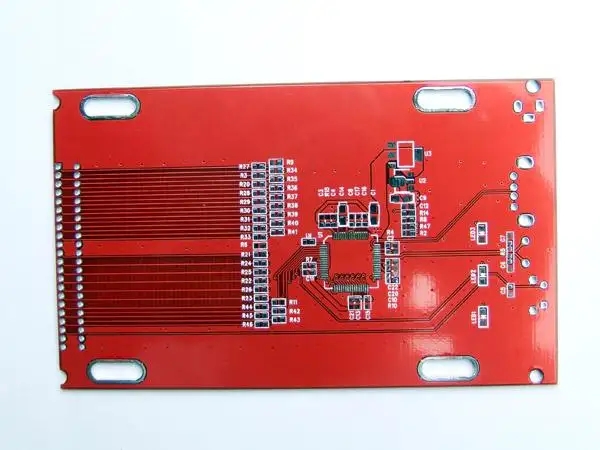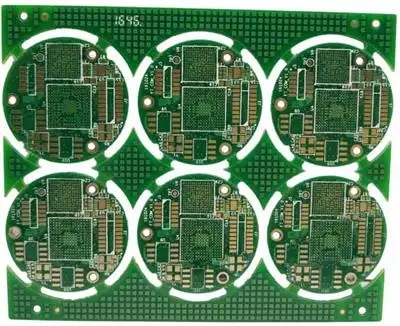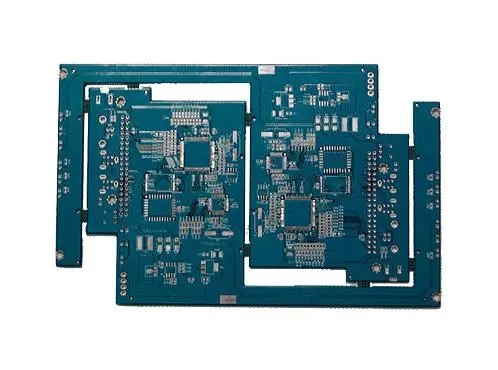
Circuit board factory explains some common sense of high-frequency board proofing
The Circuit board manufacturer, circuit board designer and PCBA manufacturer will explain to you some common sense of the circuit board manufacturer about high-frequency board proofing
How many of the 9 tips you know about HF board proofing? Specifically, the following common sense is included, and the manufacturer of HF board proofing should know more about it.
1. The internal resistance of the high frequency board testing instrument should be large
When measuring DC voltage of integrated circuit pins, a multimeter with internal resistance greater than 20K Ω/V shall be selected, otherwise there will be large measurement error for some pin voltages.
2. Pay attention to the insulating property of the electric soldering iron when testing the high-frequency board
It is not allowed to use soldering iron for welding with electricity. Make sure that the soldering iron is not charged. It is better to ground the shell of the soldering iron. Be more careful with MOS circuits. It is safer to use 6-8V low-voltage circuit iron.

3. The lead wire of high-frequency board shall be tested reasonably
If it is necessary to add peripheral components to replace the damaged parts inside the integrated circuit, small components shall be selected, and the wiring shall be reasonable to avoid unnecessary parasitic coupling, especially the grounding terminal between the audio power amplifier integrated circuit and the preamplifier circuit.
4. Attention should be paid to the heat dissipation of power integrated circuits when testing high-frequency boards
The power integrated circuit shall have good heat dissipation, and it is not allowed to work in a high-power state without a radiator.
5. Understand the working principle of integrated circuits and related circuits before testing high-frequency boards
Before checking and repairing the integrated circuit, it is necessary to be familiar with the function, internal circuit, main electrical parameters, the role of each pin, the normal voltage of the pin, the working principle of the circuit composed of the waveform and peripheral components. If the above conditions are met, the analysis and inspection will be much easier.
6. Welding quality shall be guaranteed when testing high-frequency plate
When welding, it is sure to weld firmly, and the accumulation and porosity of solder are easy to cause false soldering. The welding time is generally no more than 3 seconds, and the power of the soldering iron should be about 25W of internal heating type. The soldered integrated circuit should be carefully checked. It is better to use an ohmmeter to measure whether there is a short circuit between the pins, and then turn on the power after confirming that there is no solder adhesion.
7. Test the HF board to avoid short circuit between pins
When measuring the voltage or testing the waveform with the oscilloscope probe, the probe or probe shall not cause short circuit between the pins of the integrated circuit due to sliding, and it is better to measure on the peripheral printed circuit directly connected with the pins. Any transient short circuit is easy to damage the integrated circuit, so you should be more careful when testing CMOS integrated circuits in flat package.
8. Do not judge the damage of the integrated circuit easily when testing the high-frequency board
Do not easily judge whether the integrated circuit is damaged. Because the vast majority of integrated circuits are directly coupled, once a circuit is abnormal, it may lead to multiple voltage changes, which may not be caused by the damage of the integrated circuit. In addition, in some cases, when the measured voltage of each pin is consistent with or close to the normal value, it does not necessarily mean that the integrated circuit is good. Because some soft faults will not cause changes in DC voltage.
9. It is strictly forbidden to use grounded test equipment to contact the live TV, audio, video and other equipment on the bottom plate to detect the high-frequency board without an isolation transformer
It is strictly prohibited to directly test TV, audio, video and other equipment without power isolation transformer with grounded shell. Although general radio recorders have power transformers, when touching special TV or audio equipment, especially those with large output power or little understanding of the nature of the power used, it is necessary to first find out whether the chassis of the recorder is charged, otherwise it is very easy to cause power short circuit with TV, audio and other equipment charged on the backplane, affecting the integrated circuit, causing further expansion of the fault. circuit board manufacturers, circuit board designers and PCBA manufacturers will explain to you some common sense of circuit board manufacturers about high-frequency board proofing.






